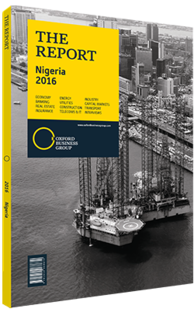Issam Darwish, Executive Vice-Chairman and Group CEO, IHS Towers: Interview

Interview: Issam Darwish
To what extent do right of way issues stifle operators’ investment in laying fibre-optic cables?
ISSAM DARWISH: Right of way requirements stifle investment in laying fibre cables in two ways: by contributing to the prohibitively high cost of laying the cables, and by keeping new players in the market from laying cables at all. In many countries the costs associated with network construction, particularly rights of way and ducts or poles, as well as the costs of obtaining permit access for public spaces, contribute to the slow pace of fibre investment.
According to a recent OECD “Digital Economy” paper, the main barrier slowing down investment in local-loop fibre networks is cost. The main cost component for fibre local loops – between 50-80% – is civil works, which involve costs associated with opening (and closing) trenches and laying ducts. These fees differ and depend on the size of the city and the density of the population Because of historic rights of way in many countries, new entrants to the market must either obtain new rights of way (a time-consuming and expensive process), or secure permissions to existing ducts. With many municipalities using right of way permitting as a revenue opportunity, and existing players unwilling to share access to ducts with the competition, there are many disincentives to laying fibre cabling. Rising market demand for high-speed data access provides a strong incentive to lay fibre cabling. Moreover, due to the aging infrastructure of so many countries in dire need of replacement networks, fibre cabling is a wise, long-term choice, but one that is often ignored due to costly and prohibitive right of way policies.
What are the traditional reservations among operators in terms of sharing infrastructure?
DARWISH: Telecommunications networks represent an enormous investment, and operators need to be sure of a return on that. If the network is shared then the operator is effectively giving an advantage to a challenger who has not had to make that material investment, but who is still able to offer equivalent network coverage and quality.
These concerns can be dealt with by offering network sharing under a usage fee system, which provides a return to the first operator and a welcome boost to margins in the context of declining average revenue per user. This way, the tower company is compensated for its investment and the newer operator acquires the passive infrastructure of the incumbent. Furthermore, offering co-location services to all operators in the region would provide a level playing field for all and would accelerate the development of the country’s communication platform.
What role should regulators play in fostering more cooperation in regard to tower sharing?
DARWISH: The telecommunications regulators’ ultimate goal is to ensure the best quality of service at a fair price for all subscribers. The benefits of tower sharing are now widely accepted: efficient use of capital (one tower, not two, in an area), reduction in operating expenditure, which can be passed on to the subscriber, fewer towers blighting the landscape and a much faster rollout of networks to serve the subscribers. Regulators can support the infrastructure sharing movement by limiting the number of towers that can be constructed in any given area where a tower has already been established.
This type of infrastructure sharing movement can be achieved by asking operators’ network planners to work together – particularly in rural, low-traffic areas – to design cooperative network roll-out solutions. Regulators could also help by offering licence fee reductions to mobile network operators that adopt material tower-sharing policies, and facilitating the importation of tower construction materials for companies that are making tower sharing possible.
You have reached the limit of premium articles you can view for free.
Choose from the options below to purchase print or digital editions of our Reports. You can also purchase a website subscription giving you unlimited access to all of our Reports online for 12 months.
If you have already purchased this Report or have a website subscription, please login to continue.

